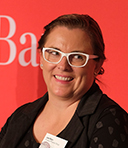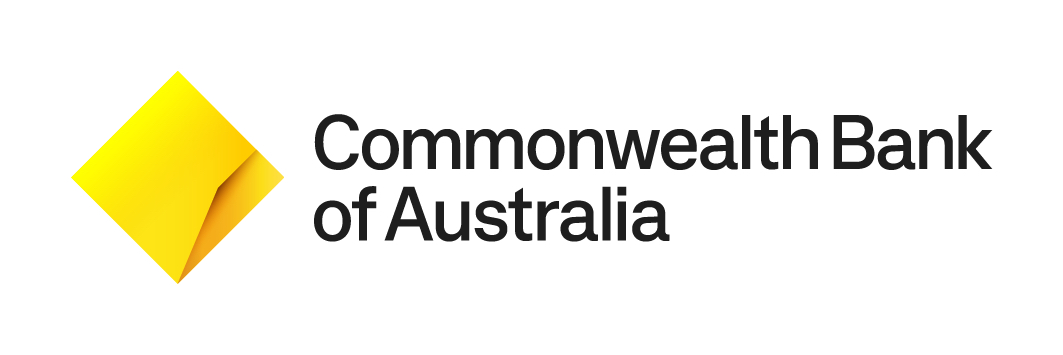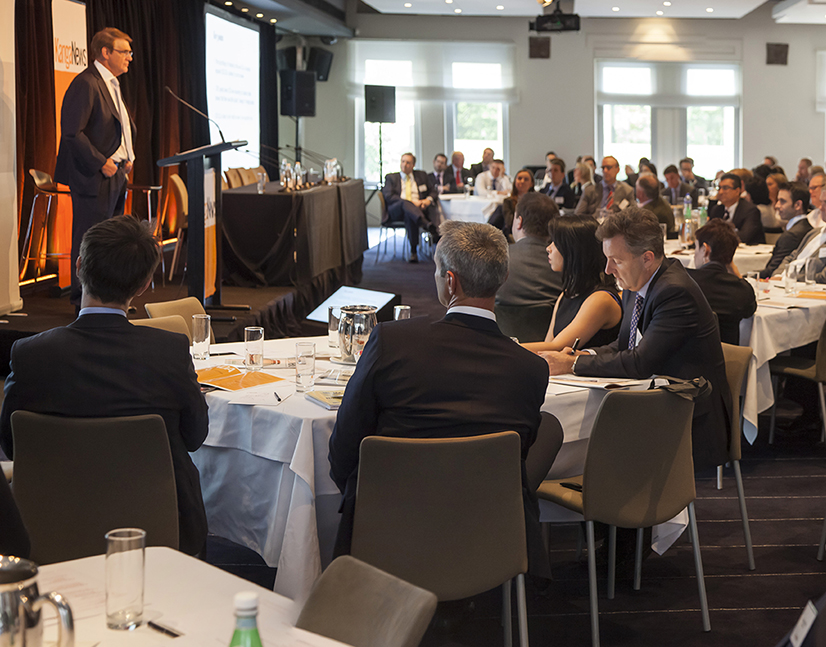
Roundtable discussion: Women in Treasury
The circumstances of 2020 have put particular pressure on corporate treasuries. Where the financial crisis was spawned – and, in Australia’s case, largely remained – in financial markets, COVID-19 rapidly developed from a public-health emergency into the greatest shock the real economy has seen in lifetimes.
In conjunction with Women in Treasury, Commonwealth Bank of Australia (CBA) and KangaNews hosted female leaders from the Australian corporate-treasury space to talk about adaptation to an unprecedented set of business and working conditions, the debt market, prospects for long-lasting change and the future place of sustainability in corporate strategy.
DEALING WITH THE PANDEMIC
Craig The events of 2020 have put a new perspective on how we do business. Can participants share experiences of how they have adapted to this environment and where the key pressure points have come?
BYRNE We had already put all our treasury documentation in soft format. We found it to be very important that the various legal teams were comfortable and that we had previously digitised our documentation. It stood us in good stead for the last six months.
AGL Energy is very supportive of flexible working – it is almost an ‘if not, why not’ approach. As such, working from home was already commonplace and the onset of COVID-19 was merely an extension of this.
I think what is most challenging about working full-time from home is missing out on the informal chat that comes from bumping into someone on the office stairs or in the kitchen, where you might find out about an idea or project that has implications from a funding, or a third-party relationship, perspective. This learning by osmosis is hard to achieve in other ways.
CLARKE The last six months have not been as hard in South Australia (SA) as I believe they have in some other states. In late March, all Australian Rail Track Corporation (ARTC) staff were advised to work from home but are now largely working back in the office. There was a big focus on how staff would manage through this period and mental health was a top priority.
Generally, our team has worked well during this challenging time. We called each other for chats, had Friday virtual catch ups and tried to retain the culture and the corridor chat that Bláthnaid Byrne mentions.
On a positive note, there is now greater acceptance of working flexibly and from home. Being in SA, and therefore away from many of our relationship managers, it has also been of benefit to be able to engage with them via video conferencing.
As for how we have adapted, we have worked as far as possible toward implementing online forms with electronic signatures. Some banks continue to request wet signatures for the various aspects necessary between dealing and settlement, and in the old days being based in SA meant we could drive forms around for signatures.
Also during this period, we have placed greater emphasis on communication with key stakeholders, including rating agencies and banks, to be proactive around investor relations.
We have had to be more forward looking when it comes to upcoming settlements and drawdowns. Our preparations needed to consider required authorisations. For example, if wet signatures were required we had to begin planning 2-3 weeks in advance in order to have sufficient time to organise documentation where necessary.
Treasury has played a significant part in the large focus on cash flows in this period. We have also supported the business in its related financial or forecast requests.
D’ANGELO Operating in the real-estate space, a key initial focus at AMP Capital was on stress testing and reporting to management to ensure the various businesses were appropriately funded.
We have used DocuSign for a long time so signing documents electronically was already in play. Of course, when it comes to signing new loan documentation many banks still require wet signatures. Fortunately, our signatories are also in Sydney so it was very common for someone in our team to drive to a colleague’s house to get a document signed. Where roll overs needed signing, this was straightforward as these signatures were made electronically.
Working from home has been an option for many years at AMP Capital. However, many staff – myself included – hadn’t previously taken up this option before the COVID-19 pandemic hit. I had only ever worked from home for a day every 2-3 weeks.
I think employees will take up this option on a more frequent basis in future, now this experience has proven it is possible and on the basis that people increasingly want different options. Some employees who didn’t previously work from home at all are now doing so and, based on the experience they have had, will continue to do so.
I continue to prefer the office environment and I agree with the comments that others have made about the importance of corridor chats. Half the time you learn what the business is doing this way.
Even so, during this period I believe we have had more engagement than ever before across the business through more direct chats between departments. The to and fro between business and treasury has been more frequent and collaborative. Prior to the pandemic, I think some departments viewed treasury as a restraint rather than an enabler to the business strategy.
“We have had more engagement than ever before across the business through more direct chats between departments. The to and fro between business and treasury has been more frequent and collaborative. Prior to the pandemic, I think some departments viewed treasury as a restraint rather than an enabler to the business strategy.”
STORY The key pressure point in our treasury function was early on when we sought to refinance some near-term facilities. Moving past this initial consideration, the change from being in the office pretty much every day to working from home every day during lockdown was challenging.
I live in a small house with my partner and our three young boys aged six, four and almost two years old. My boys are awesome, but they are loud! My days became really long as I had to stop and start throughout the day to be with the boys.
On the other hand, despite the challenges of lockdown there were some pretty special moments. My youngest son took his first steps during this time and had we not been in lockdown I probably would have missed seeing this.
After the lockdown, I’m now back in the office pretty much every day. The only change from before is that I’ve somehow assumed responsibility for school drop-offs and pick-ups, and I have to manage my afternoons and evenings around this to some extent.
CROSSLEY Clearly we have had the most restricted conditions – and the longest – in Melbourne. The current six-week, stage-four lockdown is ongoing until the middle of September. The reality for most businesses based in Melbourne CBD is that they are unlikely to return to office working before the beginning of 2021.
I work for an essential service so I have an exemption certificate that permits me to go into the office if I need. But I have not needed to do so for the last three weeks. I only go into the office for wet-ink signatures or to obtain any important documents stored there.
It has been an interesting journey over the past six months. I have tried to focus on what I can control and not worry too much about what I cannot. From a treasury perspective, though, it has been business as usual for the last six months. There is nothing around strategy or funding that has not been delivered as it should.
I am lucky that I have worked for Citipower-Powercor for eight years now so I have well-established internal and external relationships. This means I can easily pick up the phone for what I need. I feel sorry for those who are just starting out or are trying to create relationships within the treasury space, as I would imagine it is very challenging.
This is a health crisis rather than a financial or liquidity crisis. But there has been volatility in the Australian dollar and in our counterparty exposures – and an uptick in questions from stakeholders and investors as a result. Dialogue with our investors has continued via email and phone. As an essential service, we are fortunate to be in a regime whereby our revenues are protected by a cap.
In the lockdown situation, I find myself lucky to be kept busy by my work and I feel for those who have lost their jobs or who cannot go to work during the current six-week lockdown period. To be told you cannot go more than five kilometres from home or exercise for more than an hour a day is tough psychologically.
SCHUBACH We were in the fortunate position at CBA of being able to switch to working from home very quickly. The bank rolled out laptops to employees more than five years ago and many of our people have been able to work remotely for quite some time.
I was one of the least willing to leave the office back in March and I hadn’t previously worked from home very frequently, but I am somewhat converted now. This is because, fortunately, the technology has worked – even though there were a few teething problems.
So much of what we do in capital markets already happens over the phone that we were able to pivot quickly to the new working environment. When it came to the crunch, we discovered we could manage the business seamlessly from home.
I was pleased to learn that the bank was also able to run its treasury and capital positions from home, which I think is a testament to the technology. If the current situation had occurred five years ago, I’m not sure whether this would have been possible across the marketplace.
I think this experience has certainly humanised us all. At the same time, the line between work and home has definitely blurred. We tend to feel the need to turn things around at the same speed and in many cases even more quickly than before, and can feel we ought to be available for calls from early in the morning until late at night.
Of course, there have also been some great benefits. I also have young children and getting my commuting time back means I am able to cook dinner in the evening – something I have really appreciated. CBA has been very supportive of the ‘team Australia’ notion and this has translated through to the treasury and capital-markets teams.
By losing the corridor conversations and sitting in my home office alone, I also find the days to be a lot more intense. I have very much enjoyed being home with my family, but it has been difficult to manage at the same time.
D’ANGELO I agree, particularly on the long hours. I have been going to the office every couple of days recently. If I am at home and go out to get a coffee and someone calls, I feel like I must answer the phone. At the office, if I’m on a break I don’t feel guilty about not taking a call when it comes through. I know it is purely psychological and there is no difference between working in the office and at home, but it feels like there is a distinction.
CROSSLEY In the first days working from home I was finding I wasn’t having lunch – I started blocking time out in my diary for this but then the phone would ring and I’d end up taking the call anyway.
BYRNE We have also lost the time we used to have between meetings – external or even just the time from a meeting room back to your desk. There was a natural gap, whereas now it’s a case of meeting after meeting. People are also beginning to develop neck and back issues from the lack of movement.
Credit-market rebound
To the surprise of many, the corporate bond market – including the Australian domestic market – rebounded hard and fast from the early days of the COVID-19 crisis with ample liquidity and competitively-priced deal flow. Treasurers share their views on what could be a new paradigm.
CROSSLEY We found there were always markets open during this period and the market choice pretty much came down to price. A few months back the euro market was very accommodative and, more recently, the domestic market has been going gangbusters. We have also continued to receive reverse enquiries from investors around the globe over this period.
We have closed a number of deals in the bank market, and during this entire period we would have had no issue tapping any market at any time. Most banks, local and international, have been open for business and we only encountered one institution that couldn’t provide us with a price. The challenge has been price rather than liquidity.
STRUCTURAL CHANGE
Craig From the experiences of the last six months, are there any particular aspects of change that are likely to be sticky or ripe for permanent and structural change, or will everything revert to previous norms?
SCHUBACH We have seen that we can conduct transactions from home and we have proved that we don’t need to have a physical roadshow ahead of executing every deal. At the same time, I think the deal roadshow will come back even if it looks slightly different.
I also think we have all realised how much we value relationships and the majority of issuers are now realising how well their relationships with investors and banks are serving them during this period.
CROSSLEY I would ordinarily by now have been to three or four different investor events in person this year. None of these have taken place. It is this kind of communication that I’m finding I’m missing the most.
D’ANGELO This period has shown that everybody can work from home, but this is because we only expect it to be so for a fixed period. If we believed we would have to work from home forever, I think we would be bumping up against significantly greater mental-health concerns. One of the things missing is human interaction. We are doing okay with what we have at the moment – and the VC format of this roundtable is a fantastic example. But our ability to meet and connect with people outside our known connections and industries is far reduced without in-person interaction.
As Penny Schubach says, it is now proved that you don’t need a roadshow ahead of a deal for successful execution. But, again, this is because everyone thinks this situation will only last for a fixed timeframe. It fits with the idea that ‘we are all in this together’.
Going forward, I expect there will be certain transactions for which a roadshow will always be a requirement even if it is not necessary for all investor interactions. I expect a general roadshow will be necessary at least every couple of years.
SCHUBACH I agree – I think the frequency might change but at the same time everyone is realising the value of personal relationships.
CLARKE It has historically been difficult for women adequately to balance their careers and their families without feeling guilty about one or the other. That balance could potentially be better embraced in the future, post-COVID-19, working environment.
SCHUBACH We have had two graduates roll through our business from CBA’s graduate programme during the lockdown period. I have been pleasantly surprised by their confidence and efforts to immerse themselves in the business, but it will be interesting to hear from them whether they feel it has reduced the opportunity to learn by osmosis.
Craig What role can the Women in Treasury network, and professional networks more generally, play in supporting engagement and interaction?
BYRNE I think associations and networks have a critical role to play in this regard. Only last night I had a call with some senior treasurers organised by the Finance and Treasury Association, which was very much an opportunity to share information around different treasury experiences.
In the main, corporate treasuries are relatively small teams so the network around you becomes more important and comes into its own at times like this. This is a perfect example of why we need networks
Within Women in Treasury specifically, we had been running coffee catch ups at the beginning of the year and have just switched these to virtual format. We haven’t had one for about six weeks but I’m conscious that we need to start these again.
This is from the perspective of giving people the help they need around transactions and funding as well as, more importantly, offering another conversation option. We have had members struggle, though, working longer days and having less down time. They reached out and it is great that they have felt comfortable to do so. Networks are more important now than ever.
“At the office, if I’m on a break I don’t feel guilty about not taking a call when it comes through. I know it is purely psychological and there is no difference between working in the office and at home, but it feels like there is a distinction.”
CLARKE I agree. Mental health is of paramount importance. Networks can help with discussions around working out a strategy to cope with the long haul of working from home.
BYRNE I wrote my university thesis on teleworking in Germany, and at that point Dell was working this way – specifically hotdesking, satellite offices and working from home. It was all very nascent back then. The general consensus on the optimal working environment, from a productivity perspective as well as the family environment, was three days in the office and two at home. This encompasses the social benefits of office working and the positive benefits of being able to work flexibly from home.
Craig The way we have been working in 2020 seems to lend itself relatively easily to business as usual. But how much harder will it be to deliver new projects and the like in a more disparate working environment?
BYRNE From a cultural perspective, this period has shown that anything is possible. For the naysayers on flexible working, it has demonstrated working from home is achievable if we are pushed to it. It should allow people to be more open to new ideas and to be more creative in their thinking.
The part of the AGL business where I currently work is very much future-focused: the virtual power plant concept and value proposition is being designed and iterated as we go. There is no history or legacy to point to so we are doing everything for the first time. It is all very much trial and error, albeit using an agile approach.
Toward tomorrow's treasury
The crisis presents an opportunity for leaders to contemplate a long-term view of the nature of their roles. The corporate-treasury function is no different – and sustainability and flexibility are the watchwords.
CLARKE A further focus on sustainability will almost certainly be one of the ways in which life will be different for the next generation. It is not a large area of focus for me at the moment but I am keeping a close eye on developments in this regard.
This will lead to greater compliance reporting. But how this will look in the future is unclear and whether it will be a treasury function is unknown.
I wonder how relationship management will manifest for companies that are not located in major capital cities. In other words, whether video conferencing will continue to be a preferred method of communication and whether a higher proportion of meetings will take place in this format. In addition, will some of the training sessions that haven’t previously been available remotely become available regardless of location because the capability and technology are available?
My hope is that, companies continue to embrace workplace flexibility, more women will choose treasury as a path. I also really hope people learn from these times. I'd like to see the treasurers of the future being kinder, more empathetic and more diverse.
“It has historically been difficult for women adequately to balance their careers and their families without feeling guilty about one or the other. That balance could potentially be better embraced in the future, post-COVID-19, working environment.”
SUSTAINABLE FUTURE
Craig It has been suggested in a number of areas that one of the positive outcomes from the COVID-19 crisis is that it affords the opportunity to think about and work towards a more sustainable economy. What does this mean for large businesses, especially on the finance and treasury side?
SCHUBACH For a while we were worried that environmental, social and governance (ESG) issues would be put in the bottom drawer as corporates focused on getting deals done. However, in recent weeks we have seen sustainability, including green bonds, remain a priority.
Craig There has been a lot of talk about the growth of social finance, including social bonds. But this has to date been concentrated in the government and supranational space. Is it fundamentally harder to align corporate goals with social outcomes than environmental ones?
BYRNE It is essentially very hard to align social finance with corporate goals. Originally, we planned to include three metrics – two environmental and one social – in our sustainability-linked loan. We struggled with the social aspect, though, because in a lot of ways being rewarded for doing what you ought to be doing anyway is difficult to factor in.
One example is ombudsman complaints – I am not sure that as a business we should be rewarded for reducing the number of complaints that get sent to the ombudsman. Another example is hardship. Should we be rewarded for putting people onto hardship programmes? Of course not – we should be rewarded for helping to get people out of hardship. But this means moving them back to normal payments, which also doesn’t feel right as a goal.
We engaged in multiple conversations with our third-party sustainability ratings provider around this and we provided several ideas of how it might work. But it wasn’t clear enough for any of the involved parties.
It is a difficult one and I’m not suggesting companies shouldn’t be investigating this as a financing avenue. But it needs more exploration as in many cases it is not an obvious fit for a corporate issuer.
“For a while we were worried that ESG issues would be put in the bottom drawer as corporates focused on getting deals done. However, in recent weeks we have seen sustainability, including green bonds, remain a priority.”
Schubach AGL’s board and management are tied to very strict KPIs around emissions. Are debt instruments the best corporate vehicle to pursue these social mandates or are other levers better?
BYRNE We need as many options in the toolkit as we can find. Funding is almost more important from the perspective of how a bank chooses which companies it will lend to, so it is as much around our due diligence and the banks’ responsibilities to their shareholders, investors and employees.
From a corporate perspective, I think remuneration linkages are the gold standard. For now, this is how things will get done. As we all know, when it comes to change – for example when changing corporate culture – decision-making within an organisation must start at the top. If the executive team is remunerated on business decisions that will affect those metrics, it will facilitate change.
Craig Are there any ESG funding instruments that might be viewed differently in the context of the period we are traversing?
STORY Investa was already active in the ESG space before COVID-19. I don’t think our position on this will change. All our bank debt that has been refinanced has been done via green loans.
CROSSLEY We have not yet issued a green or sustainability-linked bond but we continue to monitor activity in this space. We have not yet made any decisions around which option may be best suited to us but we are certainly aware there is a plethora of options. It is about finding the most appropriate way forward for us.
“I think what is most challenging about working full-time from home is missing out on the informal chat that comes from bumping into someone on the office stairs or in the kitchen, where you might find out about an idea or project that has implications from a funding, or a third-party relationship, perspective.”















